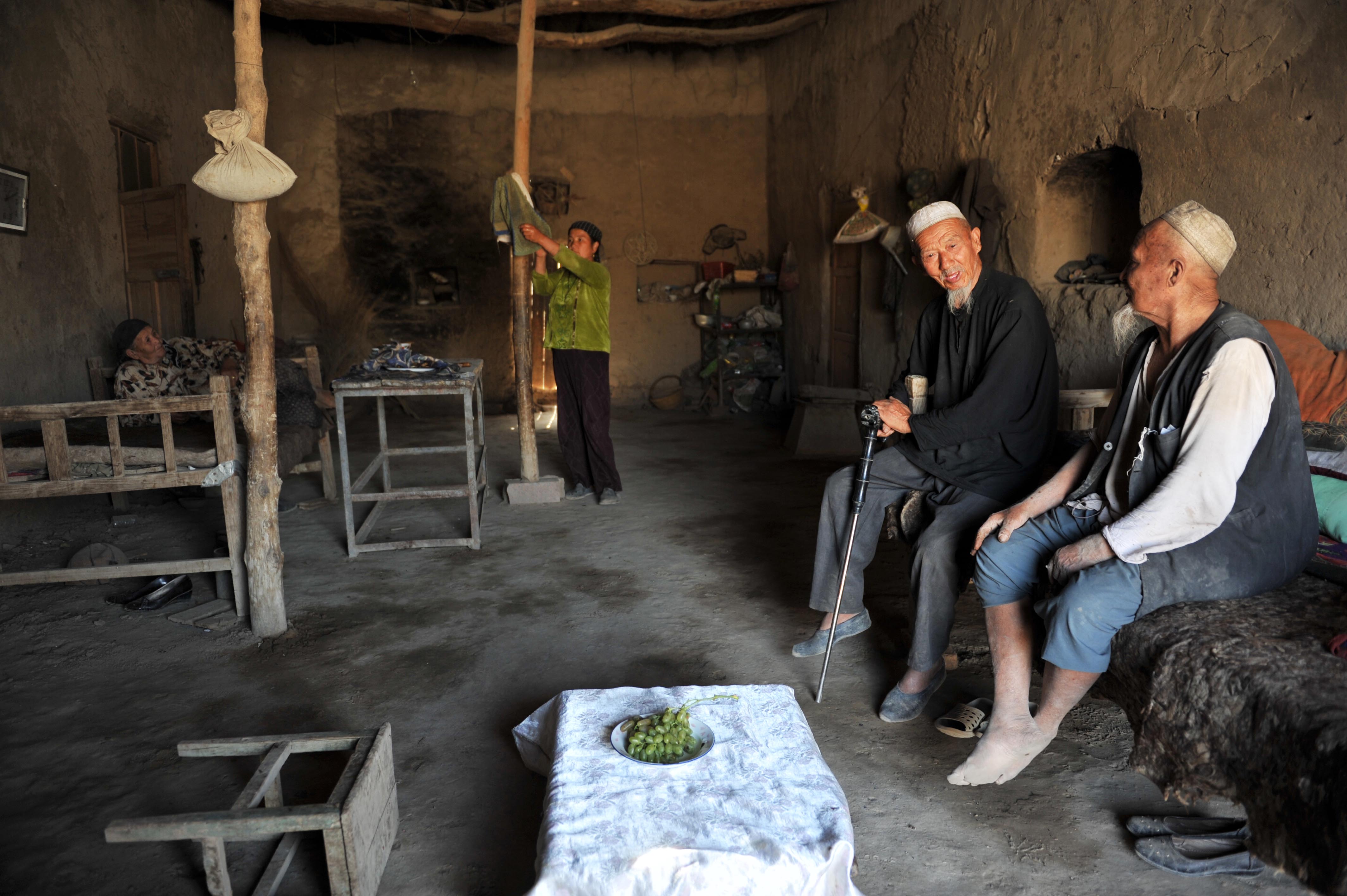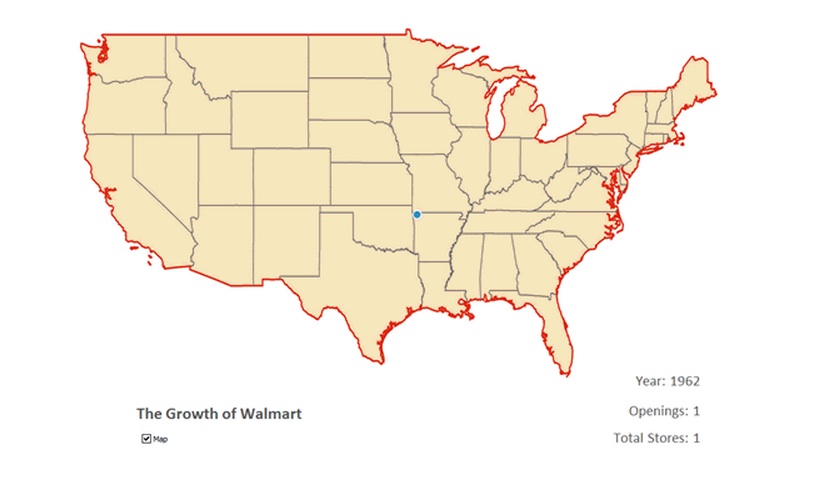What’s Better at the New Orleans Jazz Fest: The Food or the Music?
From oyster patties to po’boys, crawfish to étouffée, the caterers and restaurants offer strong competition to the legends on the big stage
![]()

Booths of food stretch as far as the eye can see and the stomach can handle. All photos by Leah Binkovitz
The annual Jazz and Heritage Festival in New Orleans, Louisiana, is as famous for its music as it is for its food. In fact, some people insist it’s the po’boys and alligator pies that take center stage.
Born in 1970 and christened by the great gospel singer Mahalia Jackson, Jazz Fest is unlike any other music festival in the country and not just because it actually has good food. Residents and tourists arrive by foot, bike and cab–some official and others just enterprising locals with a car. The acts are a mix of big names–Billy Joel, Black Keys, Frank Ocean–and local favorites–Rebirth Brass Band, Lost Bayou Ramblers, Trombone Shorty. When everything wraps up in the early evening, the crowd filters out into the streets, past colorful shotgun houses, to continue the party around town.
In other words, it’s not just a festival in New Orleans, it’s a festival of New Orleans. So what’s more New Orleans: the food or the music?

Tied with onion and fried, the crawfish sack (right) is a favorite at the festival.
For many who have been coming for many years, the festival can’t get started until they have their favorite dish to kick things off. Catherine King makes a beeline for Patton’s Catering for an oyster patty, crawfish sack and crawfish beignet. “It’s my tradition every year. This is the first thing I have to have.”
And even though seafood tends to dominate the conversation and the cooking, Bill Storer says he comes for the fried chicken. “I travel around the world in search of good fried chicken,” he says and since 1998, he’s traveled to New Orleans from San Jose, California for a plate of the good stuff at Jazz Fest.
Over the years, he says things haven’t changed much but he did have to switch his morning dive bar routine after the one he frequented closed recently. “You like to start off in the morning at a good, seedy bar,” he explains, “Have a few drinks right off and then come here for lunch.” This year he settled on Ms. Mae’s, located across town. “It’s the ultimate dive bar. I was there and the lady said, please get out of the way, you’re standing in vomit.”

Communal tables are a good place to get food reviews from other patrons before selecting your own menu.

Note the handy beer cooler necklace for convenient two-hand eating.
The festival puts food front and center. After walking in past the gospel and jazz tents, a wide lawn of tables and food stands opens to your right. Each vendor offers one plate or dish. You can get Storer’s fried chicken and Cajun jambalaya from New Orleans’ own Catering Unlimited or cheesy crawfish bread from Panorama Foods based in Marksville, Louisiana. With 22 stands representing all parts of Louisiana, this is just one of nine places to find a bite to eat so pace yourself.
Enchanted by the food, you might miss the truck off to your right, loaded up with produce courtesy a one Mr. Okra. Raised in the 3rd ward, he’s lived in the 8th for nearly 30 years but he’s known all over town. Mr. Okra can usually be found driving his truck loaded with lemons, greens and more through the streets of New Orleans, singing the day’s offering into a speaker system. Joined by his daughter and friend, Mr. Okra now offers his goods to Jazz Fest visitors as well. “I’ve been coming out here about three years. I like it,” he says seated in the truck with a view of the Jazz and Heritage stage, “You meet a lot of people.”

Mr. Okra may be as famous in New Orleans as some of the performers.

If you’re looking for fruit, this is one of the few places to get a piece.
Unlike Storer’s shuttered dive bar, the festival has continued to grow over the years, surviving hurricanes and oil spills. According to retired shrimper Jim Hebert, the explanation for that is simple: “We still have the best seafood around and that’s coming from a Cajun in the seafood industry.” Po’Boy in hand, Hebert explains, “I’m kind of partial to shrimp, my family is in the shrimping business.”
Hebert hadn’t been back to Jazz Fest for nearly 20 years, but says it’s even better than he remembers. “Although it was fantastic back then, this has grown.” Spread over two weekends, the festival attracts hundreds of thousands of food and music fans. Twelve music tents offer a wide variety of experiences. If you want the big shows and big crowds, the Acura Stage offers that for more mainstream acts (and rather un-jazzy) including Maroon 5 and Fleetwood Mac. Breaking the trend at Acura, though, is one act you won’t want to miss: the legendary Trombone Shorty (so named because he was tearing it up even as a kid) and Orleans Avenue, performing Sunday. Meanwhile the Fais Do-Do Stage, named for the Cajun dance parties that borrowed the name from mothers whispering “fais do-do” or “go to sleep” to fussy children, has a smaller stage and bleachers you might even get a chance to sit on. For local acts, like the Stooges Brass Band or the festival favorite Mardi Gras Indians, the Jazz and Heritage Stage also offers a smaller space.
You can also catch some of the Mardi Gras Indians and second line bands as they parade through the festival itself. Born out of funerary traditions, the second-line parades are full of color and big brass and not to be missed. Everyone gets in on the action, including children, and crowds join in behind the slow march, clapping and dancing. There is a schedule but the felicitous appearance of the music makes it all the more infectious.

Hot sauce goes fast at one stand.

After a career in shrimping, Hebert says he’s actually about to invest in oysters, another favorite of the area.

Mardi Gras Indians entertain crowds at Jazz Fest.

Sometimes the most engaging performers aren’t even on the stages.

Not your typical music festival attire.

The second line parades keep things lively as you walk from stage to stage.

Born out of funerary traditions, second line parades get the good times rolling with bright colors and great music.
You can even park at one of the tables after getting your food and likely catch one of these high-energy parades.
A couple of Coors in front of him, Kenneth Gunndersson is digging into a mound of juicy red crawfish as a group of feathered Mardi Gras Indians go by. He traveled all the way from Sweden for the dish and he says it actually reminds him of home. “In Sweden, we eat crawfish but the spices are not that strong,” he explains, “We use dill and salt.”
“And vodka!” His friend interrupts.
“Yeah, we drink vodka too.” Gunndersson says crawfish are popular for a few weeks in August in Sweden. “I remember when I was a boy, fishing for crawfish with my brother, my father and my uncle. Every time I eat crawfish it reminds me of my home and my childhood.”
Halfway through a tour of cities that would take him to Nashville and Memphis, Tennessee; Mississippi; and Austin, Texas as well as New Orleans, Gunndersson says, “The best food? New Orleans, of course.”

You can’t go wrong with crawfish and beer.

Only his second time at Jazz Fest, Gunndersson (left) says the reasons for traveling across the world are pretty self-explanatory: “Look around: you listen to music, you eat, you drink, people are friendly, you’re having a good time.”

Cool down with a mango freeze, available at multiple locations around the fair grounds.

Dancing not required, but also irresistible.
If you can’t make it to Jazz Fest this weekend, listen in over at WWOZ.
/https://tf-cmsv2-smithsonianmag-media.s3.amazonaws.com/accounts/headshot/Leah-Binkovitz-240.jpg)
/https://tf-cmsv2-smithsonianmag-media.s3.amazonaws.com/accounts/headshot/Leah-Binkovitz-240.jpg)